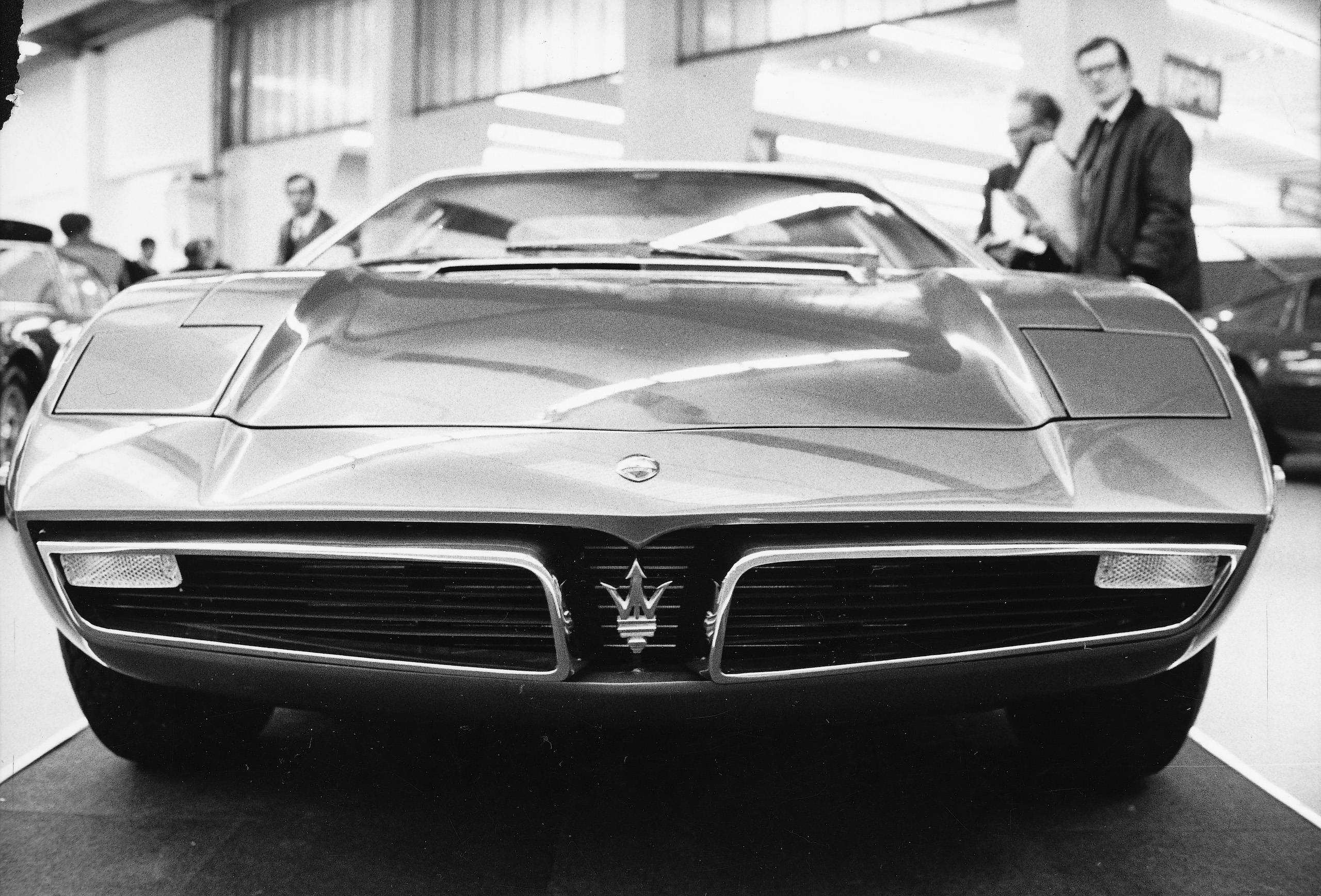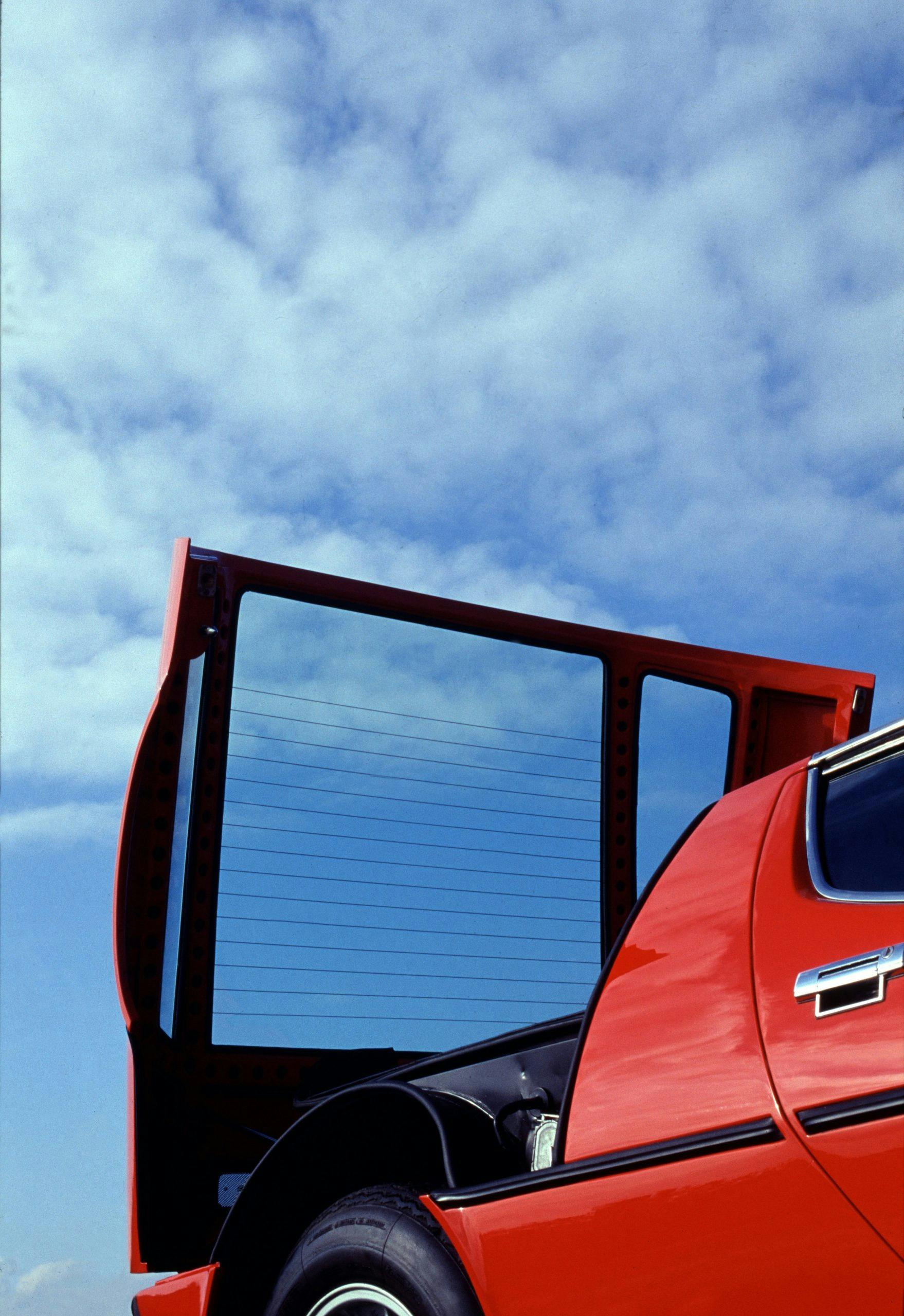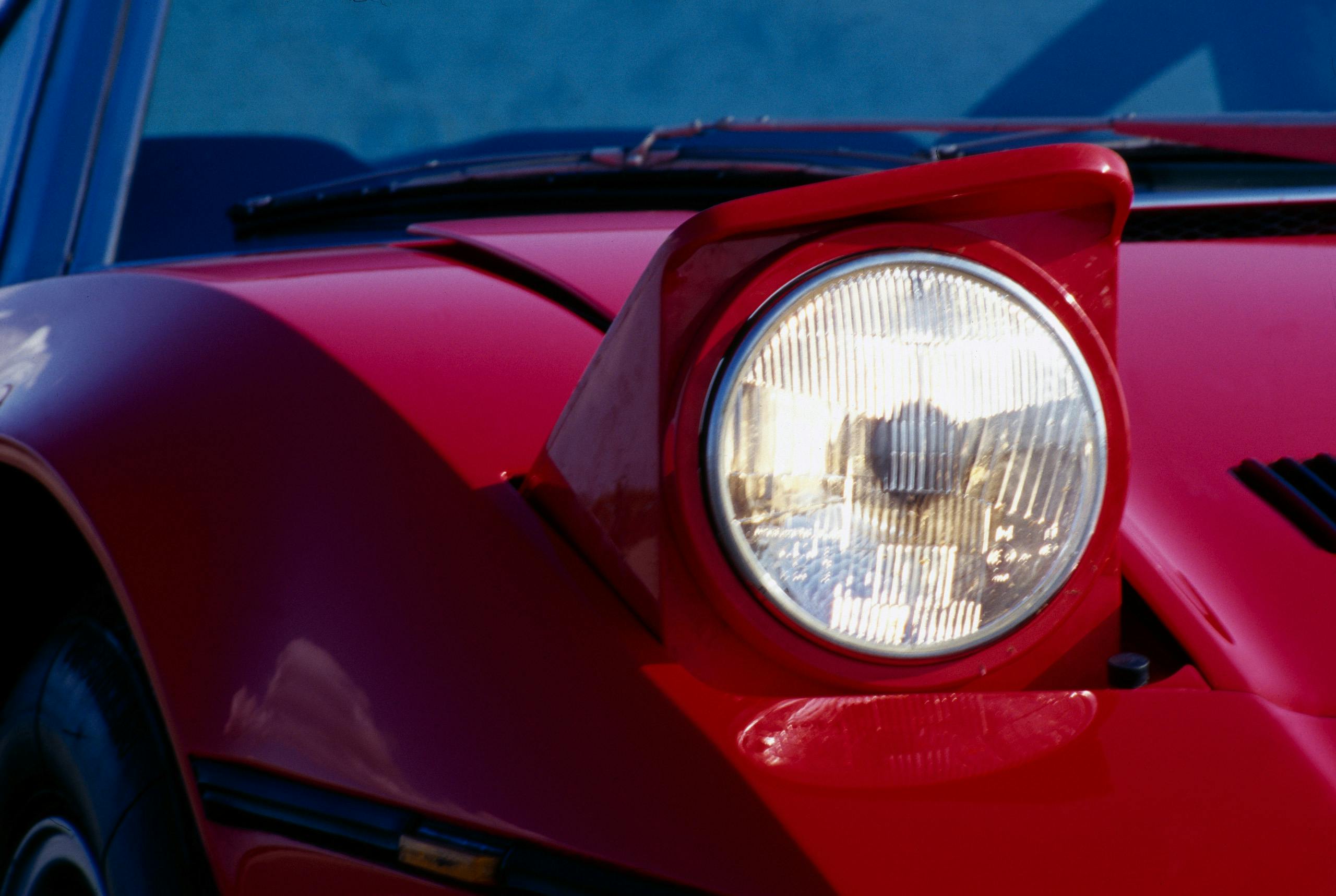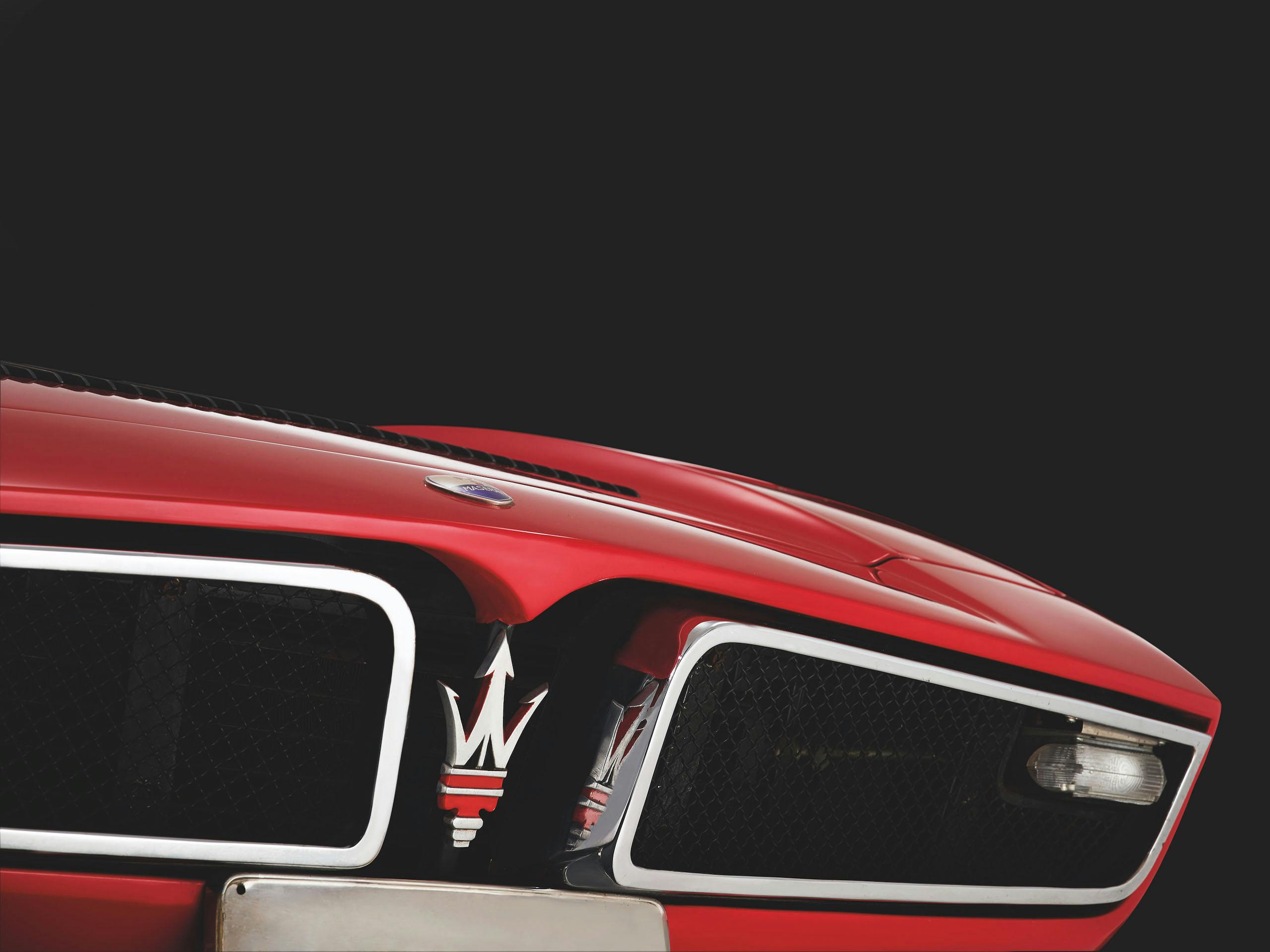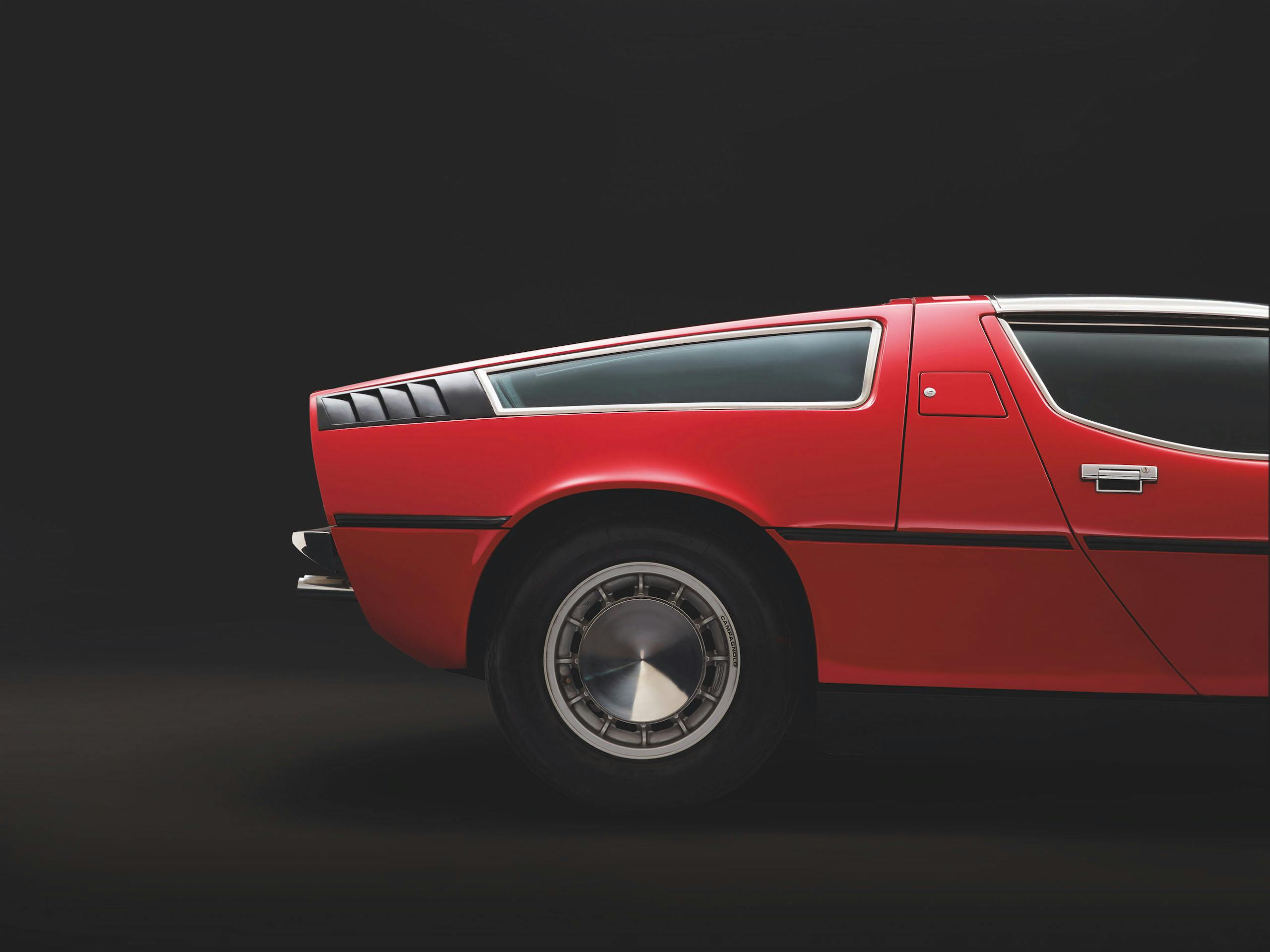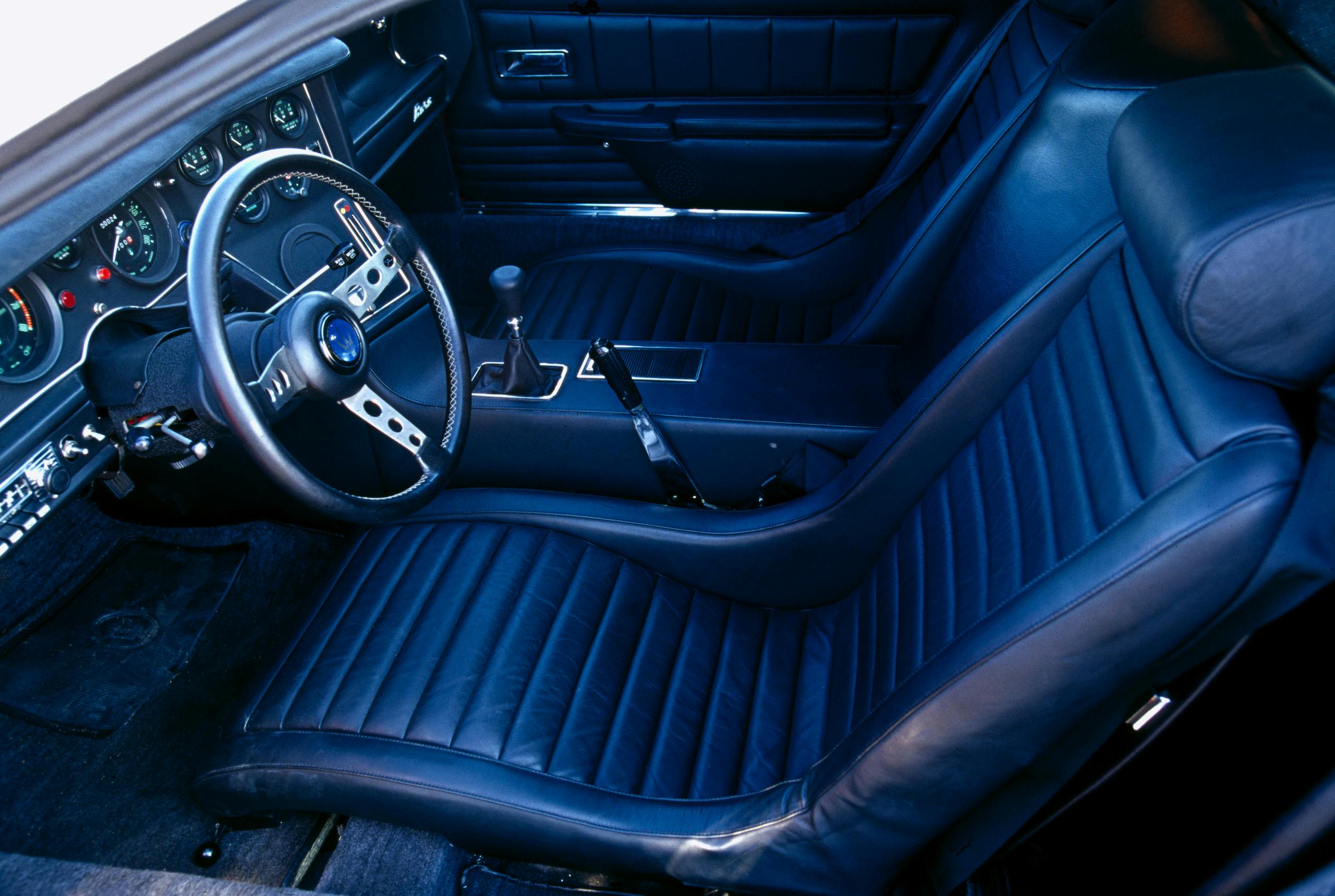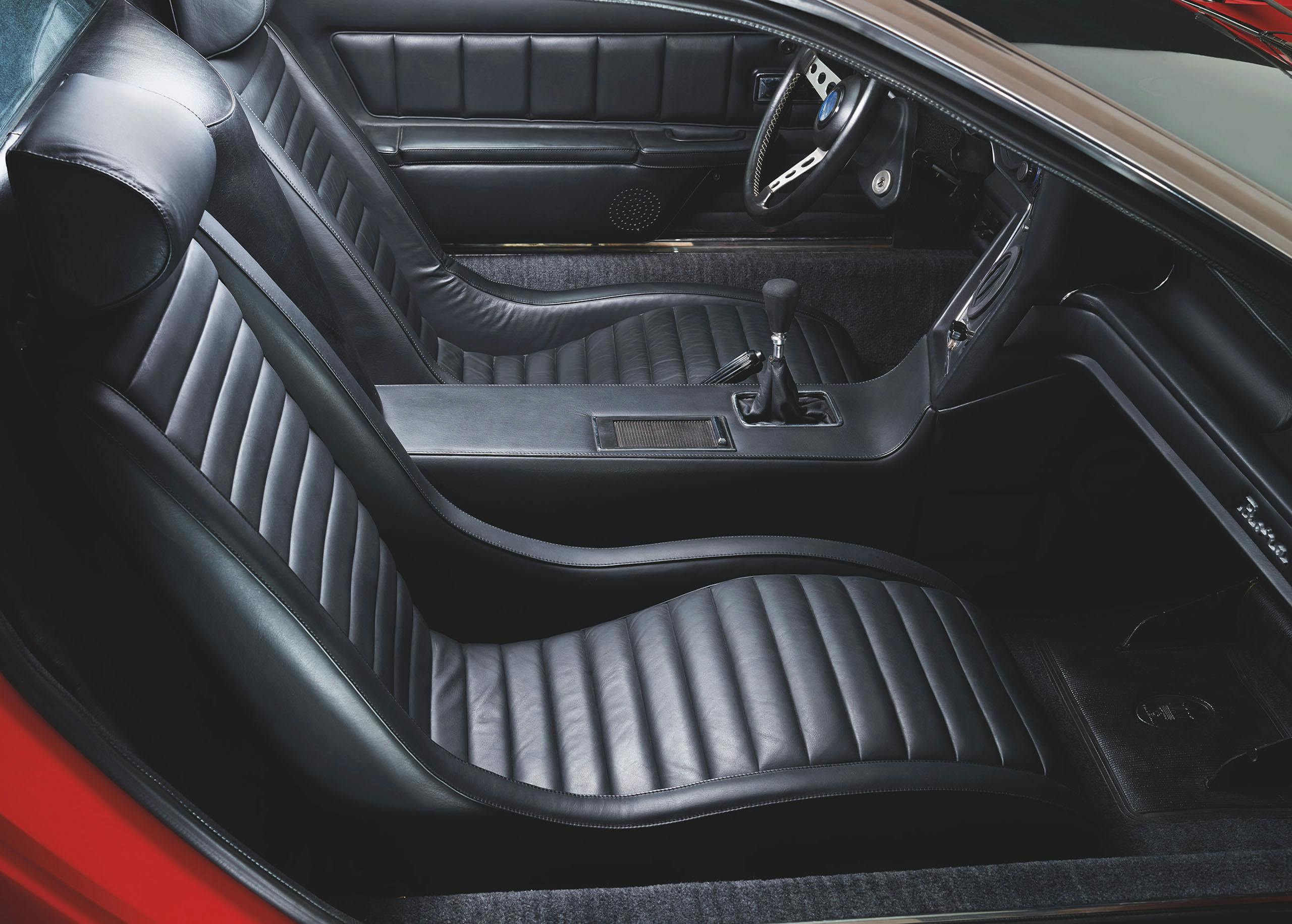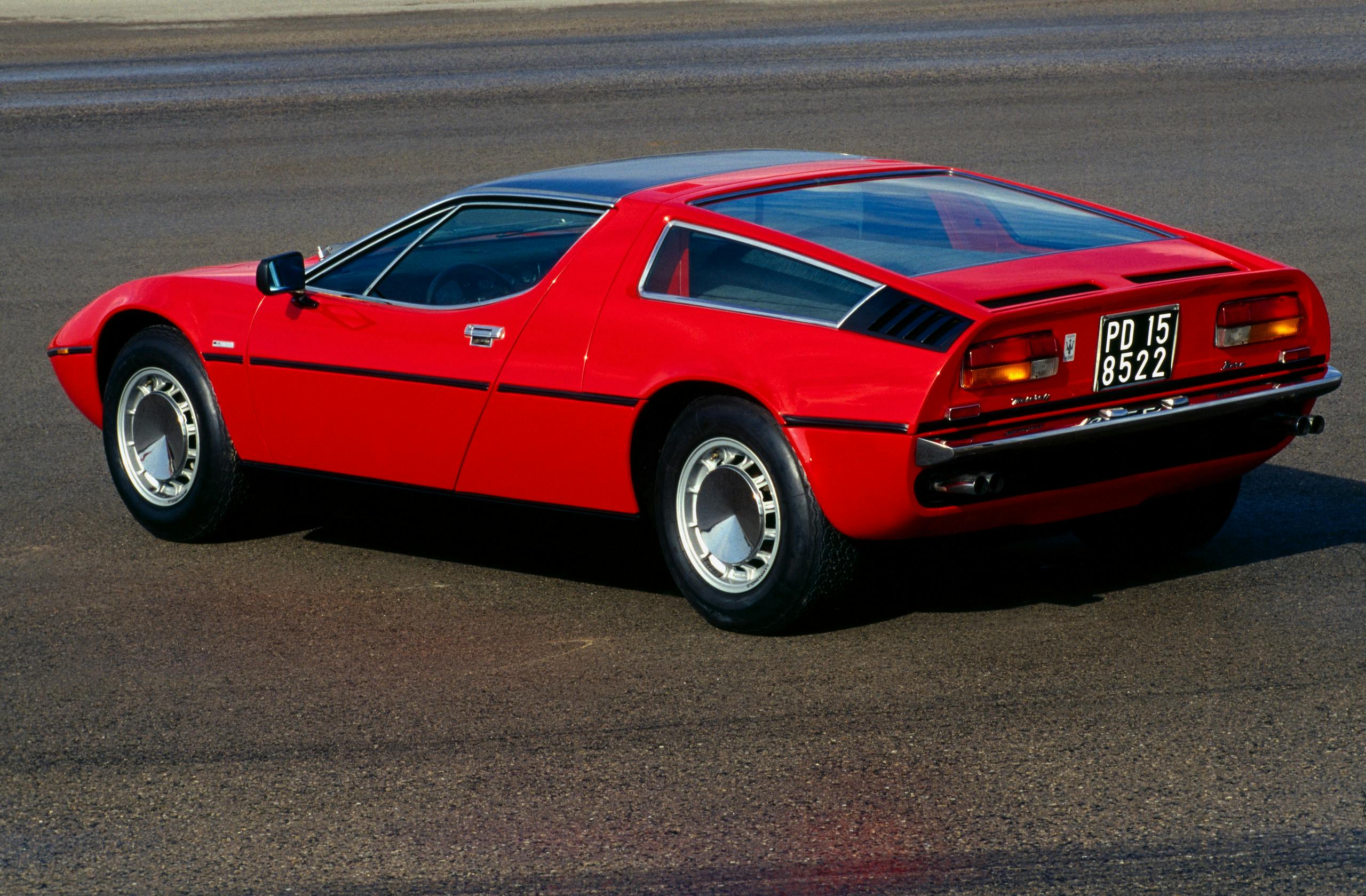Media | Articles
50 years ago, Maserati’s Bora married French quirk and Italian chic
Fifty years ago, on March 11, 1971, the world got its first look at the Maserati Bora, and the Italian supercar did not disappoint. Introduced at the Geneva International Motor Show, the Bora was not only Maserati’s first production model to feature a mid-mounted engine, it also incorporated several proven innovations from its quirky French counterpart, Citroën.
That may seem like was an odd collaboration, except that the Bora was developed during Citroën’s brief ownership of Maserati. The marriage lasted only six years, but it resulted in a high-end two-seat coupe that drew rave reviews at the time. Motor Sport magazine called the Bora “one of the best road sports cars in the world today, a dream successfully put into practice, with a shape approaching the ultimate in passenger car aerodynamics, a claimed maximum speed of over 170 mph, and road-holding and handling with hardly an equal off the racing circuit.” High praise.
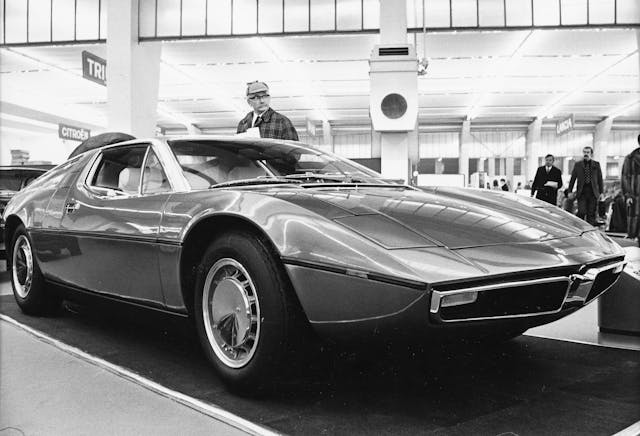
Following the trend that had already revolutionized Formula 1 racing cars over previous years, Maserati asked Giorgetto Giugiaro of Italdesign to draft a mid-engine sports car with enhanced performance, design, comfort, and safety. The Bora’s performance requirement was met with a 4.7-liter V-8 (and later, a 4.9-liter V-8) borrowed from its front-engine Ghibli sibling. The engine, mounted lengthways on a subframe, produced 310 horsepower at 6000 rpm.
Giugiaro’s elegant design provided a futuristic look, with a low and slender front end, a grille with two rectangular air vents, sleek sides divided by thin black rubber trim, and a truncated rear. Among Citroën’s direct contributions to the supercar were retractable headlights to prevent aerodynamic drag, pneumatic brakes—operated via a pressure-sensitive “mushroom” button—and hydraulically-adjusted seats. Other features included independent suspension for all four wheels (a first for a Maserati), a dry-mounted single-disc clutch, a five-speed gearbox, and telescopic suspension dampers.
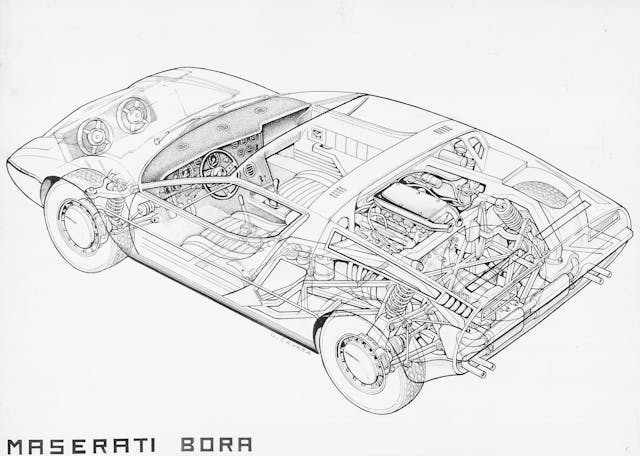
When the Bora reached the U.S. in 1973, it carried a price tag of $26,900 ($154,000 today), about the same price as a Ferrari 365 GTB/4 convertible. The global oil crisis arrived soon after, however, and Citroën filed for bankruptcy in 1974. Alejandro de Tomaso acquired the automaker’s assets in 1975, and he kept Bora production alive until 1978. The final tally was 564 cars in eight years.
Marketplace
Buy and sell classics with confidence
Today, a 1971 Maserati Bora in no. 2 (Excellent) condition carries an average value of $129,000. It remains far more accessible than another time-honored supercar that debuted the same day in Geneva—the Lamborghini Countach LP 500, which would go into production three years later. The Bora may have been out-shouted by the brash Countach, but this mid-engine Maserati possesses an unusual lineage and an Italian charm all its own.


